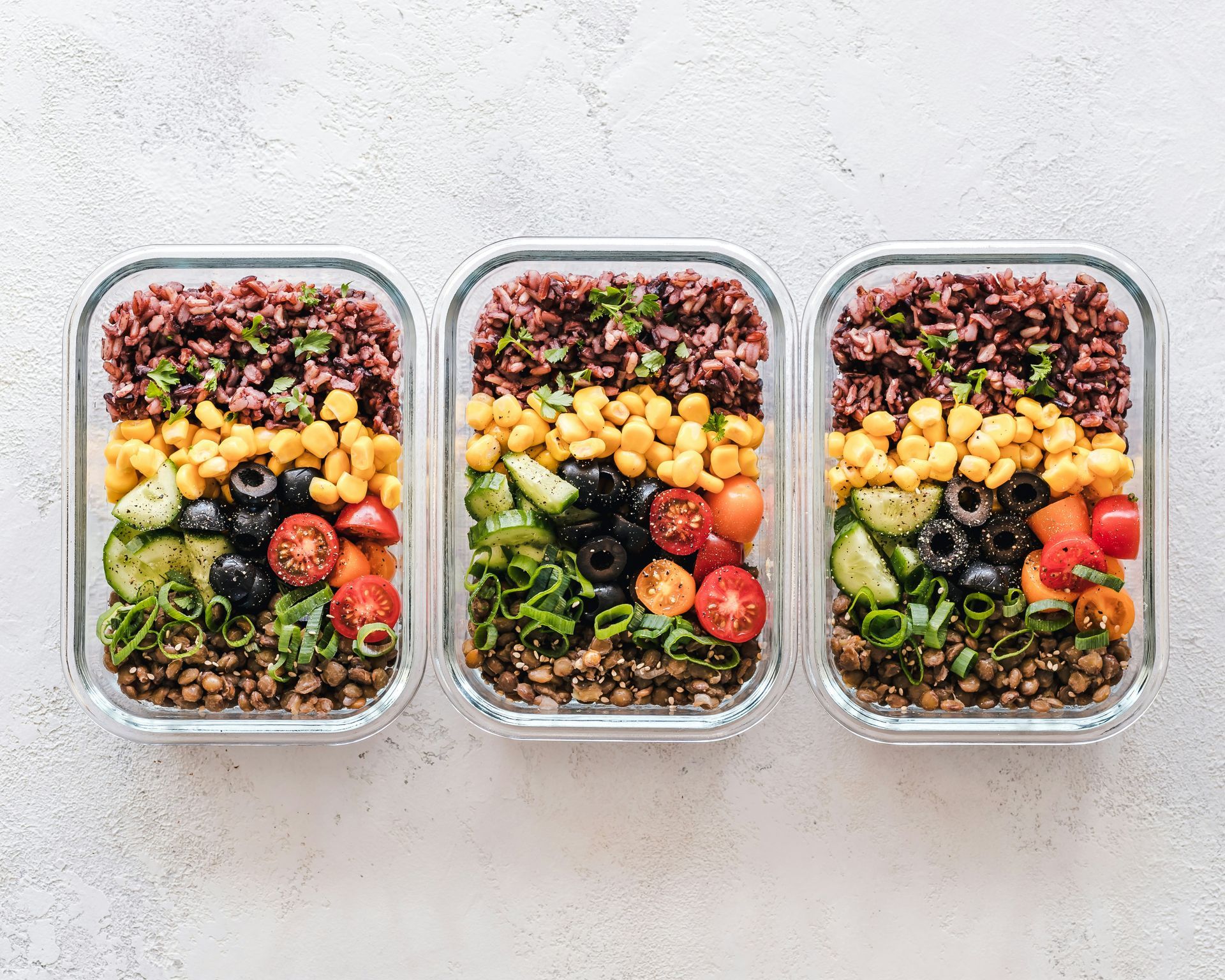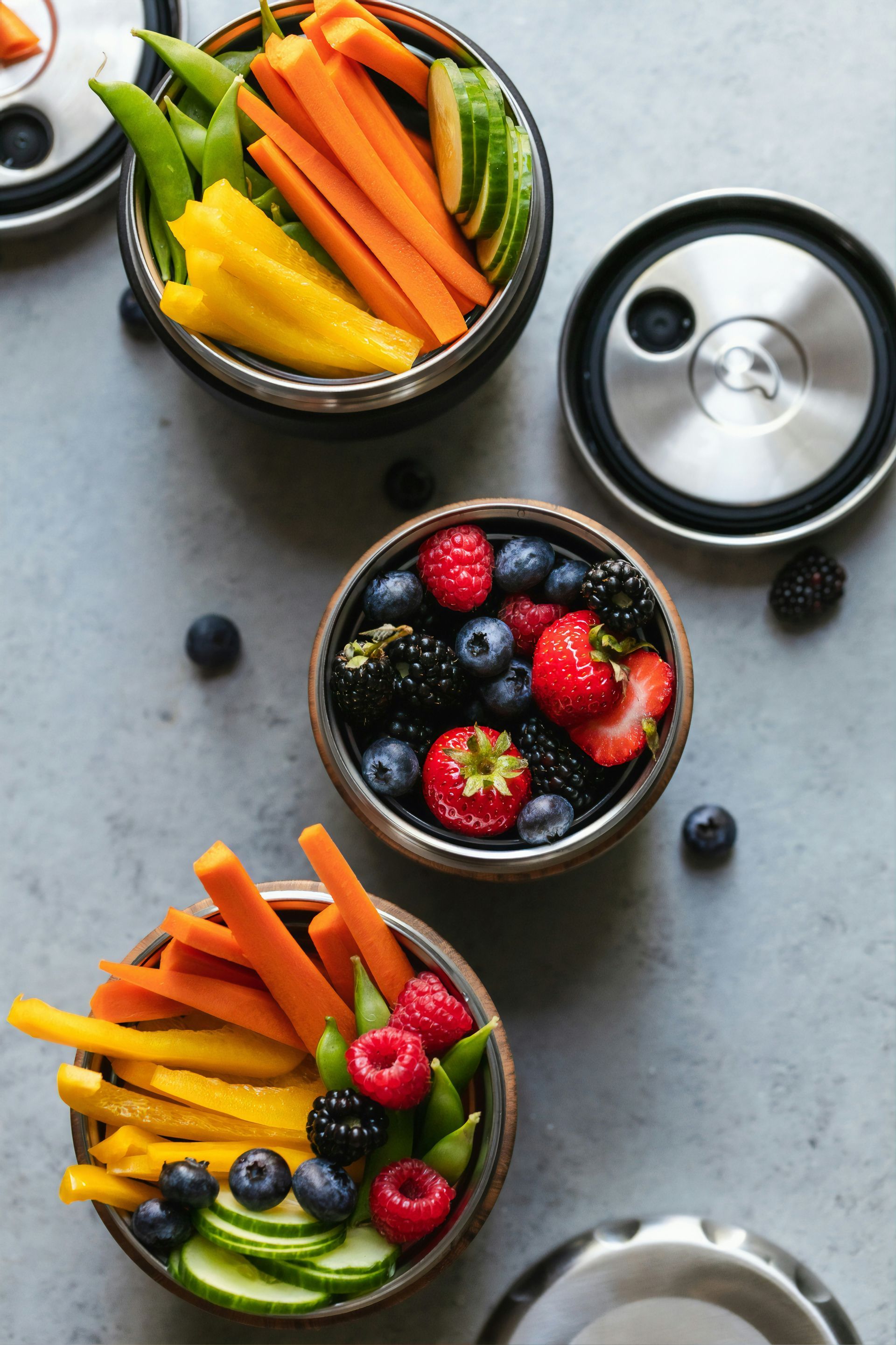Back to School Nutrition Tips
As we start another school year, it's a perfect opportunity to set up your kitchen with healthy food options readily available for your student.

Just as it is important to put the right fuel in the gas tank in your car so it runs correctly, fueling your body with good nutrition has been show to help kids do better in school, focus, and have more energy. Starting the day off with a healthy breakfast, and continuing to energize the body with smart food choices all day will set your student up for optimal learning and success.
BREAKFAST: Start the day off right with breakfast. Enjoying 2-3 food groups is a great way to ensure a well-rounded start to the day. Including foods higher in protein and/or fiber will help keep bellies full until the next meal or snack.
- Fruit and yogurt parfait
- English muffin egg sandwich with ham and low-fat cheese
- Whole grain cereal with low-fat or fat-free milk
- Oatmeal topped with fruits, nuts, and cinnamon
- Smoothie with fresh/frozen fruit, yogurt and milk
- Leftover veggie pizza/English muffin pizzas
- Peanut butter and jelly on whole wheat bread
SNACKS: Snacks keep us going during the day. Some students will eat their lunch early while others are eating later. A snack can help us refuel to think more clearly and continue to feel energized throughout the day. Think...
- Apples with peanut butter
- Yogurt and granola
- Low-fat cheese and whole grain crackers
- Hummus with whole grain pitas or pretzels
- Celery with low-fat cream cheese and cranberry-raisins
- Peanut butter on whole grain graham crackers
- Low-fat popcorn and grapes
- Nuts and dried fruit
HYDRATE: Drinking water throughout the day is important to stay hydrated. It can help keep you alert and focused. Water is the perfect drink for staying hydrated during the school day.
LUNCHES: Enlist your child's help in packing lunches. Take them to the grocery store and talk about the food groups, colors of all the fruits and veggies, and have them help find foods with whole grains (higher fiber content). Have them pick out a fruit or veggie to try for the week.
- Food groups - lean proteins, low-fat/fat-free dairy, grains, fruits, veggies
- Colors of fruits/veggies - red, yellow/orange, green, blue/purple, tan/white
- Keep things simple: use leftovers when possible
- Prep foods (cut up, wash, pre-portion, etc) on the weekend to help make the weekly packing easier
SPACE: Have a dedicated area in your fridge, freezer, an/or pantry with healthy options that are readily available for your child to grab.
- Fridge: clementines, low-fat or Greek yogurt, apples, cut up melons or strawberries, hummus, low-fat cheese sticks, cucumber/carrot/celery sticks, low-fat ranch dressing
- Pantry: pre-packaged pretzels, pre-portioned peanut butter, canned fruit in its own juices, individualized trail mix packages, bananas, whole grain cereal, whole grain crackers, low fat popcorn, dried fruit, low sodium soups, salsa, applesauce
- Freezer: squeezable yogurt tubes (frozen yogurt!), frozen fruit to eat or to include in smoothies, whole grain waffles










